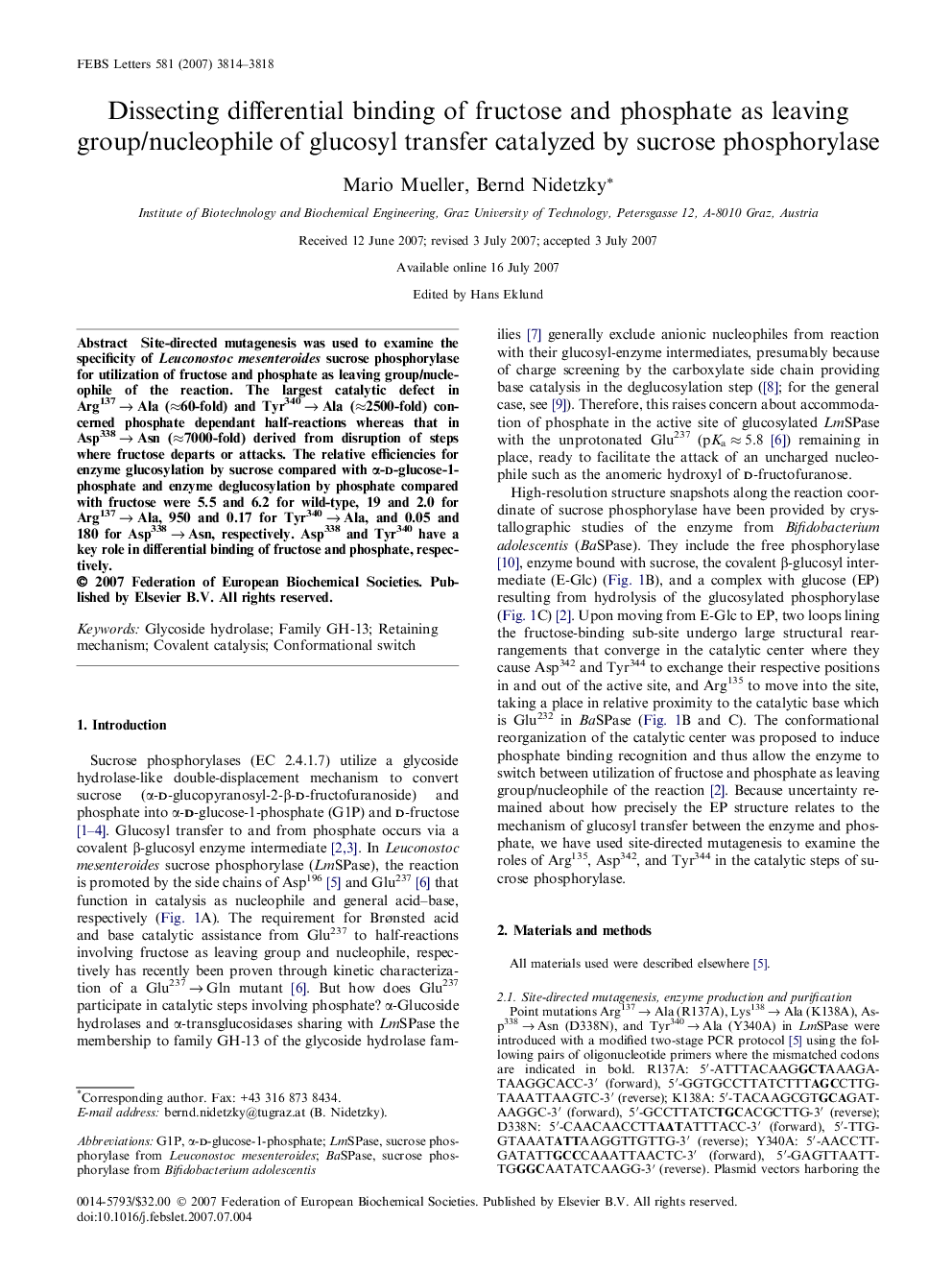| Article ID | Journal | Published Year | Pages | File Type |
|---|---|---|---|---|
| 2050638 | FEBS Letters | 2007 | 5 Pages |
Site-directed mutagenesis was used to examine the specificity of Leuconostoc mesenteroides sucrose phosphorylase for utilization of fructose and phosphate as leaving group/nucleophile of the reaction. The largest catalytic defect in Arg137 → Ala (≈60-fold) and Tyr340 → Ala (≈2500-fold) concerned phosphate dependant half-reactions whereas that in Asp338 → Asn (≈7000-fold) derived from disruption of steps where fructose departs or attacks. The relative efficiencies for enzyme glucosylation by sucrose compared with α-d-glucose-1-phosphate and enzyme deglucosylation by phosphate compared with fructose were 5.5 and 6.2 for wild-type, 19 and 2.0 for Arg137 → Ala, 950 and 0.17 for Tyr340 → Ala, and 0.05 and 180 for Asp338 → Asn, respectively. Asp338 and Tyr340 have a key role in differential binding of fructose and phosphate, respectively.
